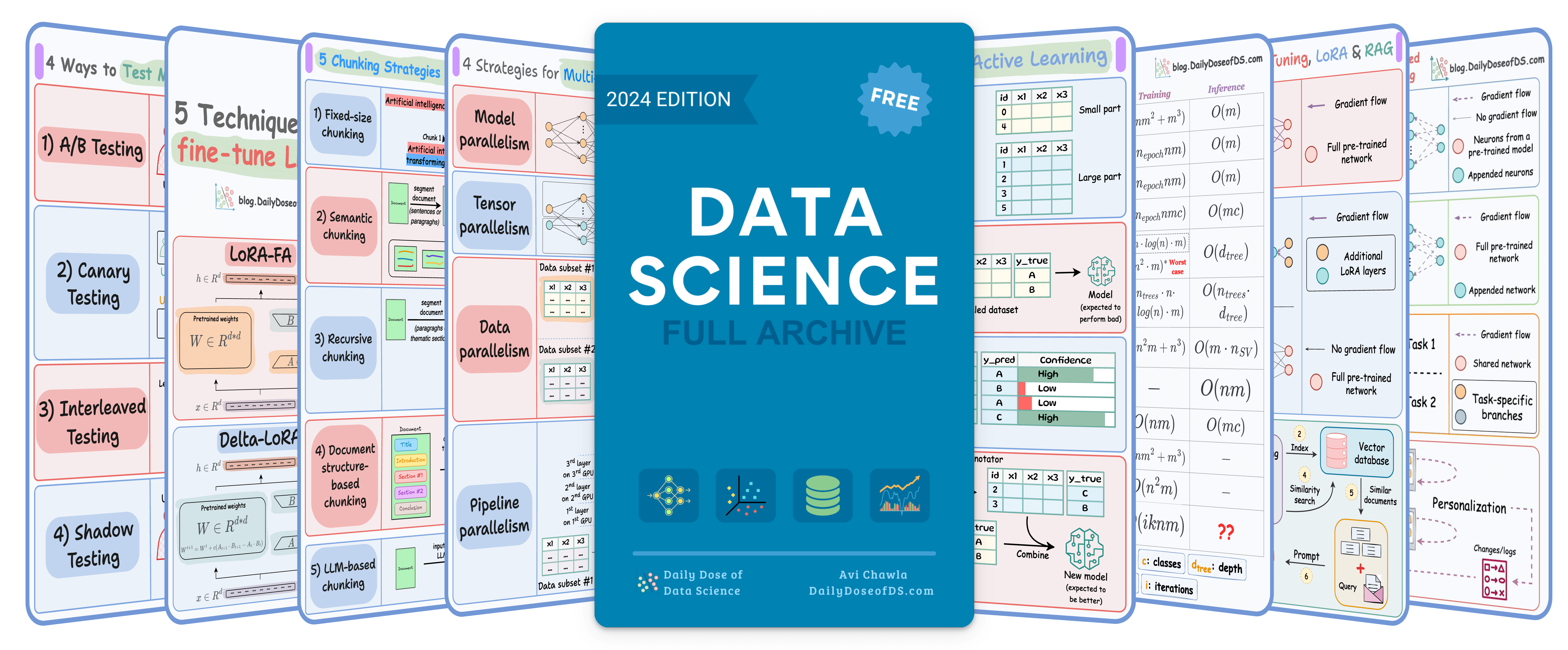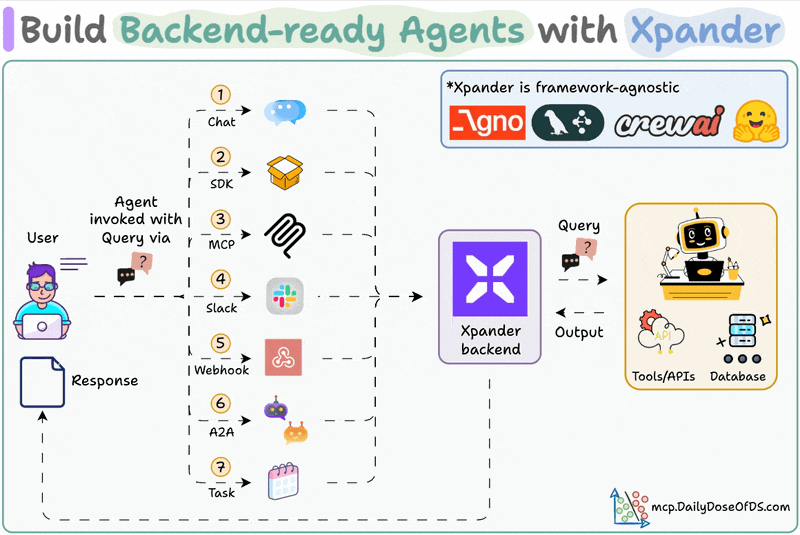

TODAY'S ISSUE
Hands-on
Build and deploy Agents to production
We have been building AI Agents in production for over an year.
If you want to learn too, we have put together a simple hands-on tutorial for you.
We build and deploy a Coding Agent that can scrape docs, write production-ready code, solve issues, and raise PRs, directly from Slack.
Tech Stack:
- Claude Code for code generation
- xpander as the Agent backend
- Firecrawl for web scraping
For context...

xpander is a plug-and-play Backend for agents that manages scale, memory, tools, multi-user states, events, guardrails, and more.
Once we deploy an Agent, it also provides various triggering options like MCP, Webhook, SDK, Chat, etc.
Moreover, you can also integrate any Agent directly into Slack with no manual OAuth setups, no code, and no infra headaches.
One good thing is that this Slack Agent natively supports messages with audio, images, PDFs, etc.
Note: If you want to learn how to build Agentic systems, we have published 6 parts so far in our Agents crash course (with implementation):
machine learning
The intuition behind using ‘Variance’ in PCA
PCA is built on the idea of variance preservation.
The more variance we retain when reducing dimensions, the less information is lost.
Here’s an intuitive explanation of this.
Imagine you have the following data about three people:

It is clear that height has more variance than weight.
Even if we discard the weight, we can still identify them solely based on height.

But if we discard the height, it’s a bit difficult to identify them now:

This is the premise on which PCA is built.
More specifically, during dimensionality reduction, if we retain more original data variance, we retain more information.
Of course, since it uses variance, it is influenced by outliers.
That said, in PCA, we don’t just measure column-wise variance and drop the columns with the least variance.
Instead, we transform the data to create uncorrelated features and then drop the new features based on their variance.

To dive into more mathematical details, we formulated the entire PCA algorithm from scratch here: Formulating PCA Algorithm From Scratch, where we covered:
- What are vector projections, and how do they alter the mean and variance of the data?
- What is the optimization step of PCA?
- What are Lagrange Multipliers?
- How are Lagrange Multipliers used in PCA optimization?
- What is the final solution obtained by PCA?
- Proving that the new features are indeed uncorrelated.
- How to determine the number of components in PCA?
- What are the advantages and disadvantages of PCA?
- Key takeaways.
And in the follow-up part to PCA, we formulated tSNE from scratch, an algorithm specifically designed to visualize high-dimensional datasets.
We also implemented tSNE with all its backpropagation steps from scratch using NumPy.
Read here: Formulating and Implementing the t-SNE Algorithm From Scratch.
machine learning
A point of caution when using one-hot encoding
One-hot encoding introduces a problem in the dataset.

More specifically, when we use it, we unknowingly introduce perfect multicollinearity.
Multicollinearity arises when two (or more) features are highly correlated OR two (or more) features can predict another feature:

In our case, as the sum of one-hot encoded features is always 1, it leads to perfect multicollinearity, and it can be problematic for models that don’t perform well under such conditions.

This problem is often called the Dummy Variable Trap.
Talking specifically about linear regression, for instance, it is bad because:
- In some way, our data has a redundant feature.
- Regression coefficients aren’t reliable in the presence of multicollinearity, etc.
That said, the solution is pretty simple.
Drop any arbitrary feature from the one-hot encoded features.
This instantly mitigates multicollinearity and breaks the linear relationship that existed before, as depicted below:

The above way of categorical data encoding is also known as dummy encoding, and it helps us eliminate the perfect multicollinearity introduced by one-hot encoding.
We covered 8 fatal (yet non-obvious) pitfalls (with measures) in DS here →
THAT'S A WRAP
No-Fluff Industry ML resources to
Succeed in DS/ML roles

At the end of the day, all businesses care about impact. That’s it!
- Can you reduce costs?
- Drive revenue?
- Can you scale ML models?
- Predict trends before they happen?
We have discussed several other topics (with implementations) in the past that align with such topics.
Here are some of them:
- Learn sophisticated graph architectures and how to train them on graph data in this crash course.
- So many real-world NLP systems rely on pairwise context scoring. Learn scalable approaches here.
- Run large models on small devices using Quantization techniques.
- Learn how to generate prediction intervals or sets with strong statistical guarantees for increasing trust using Conformal Predictions.
- Learn how to identify causal relationships and answer business questions using causal inference in this crash course.
- Learn how to scale and implement ML model training in this practical guide.
- Learn 5 techniques with implementation to reliably test ML models in production.
- Learn how to build and implement privacy-first ML systems using Federated Learning.
- Learn 6 techniques with implementation to compress ML models.
All these resources will help you cultivate key skills that businesses and companies care about the most.
SPONSOR US
Advertise to 600k+ data professionals
Our newsletter puts your products and services directly in front of an audience that matters — thousands of leaders, senior data scientists, machine learning engineers, data analysts, etc., around the world.






